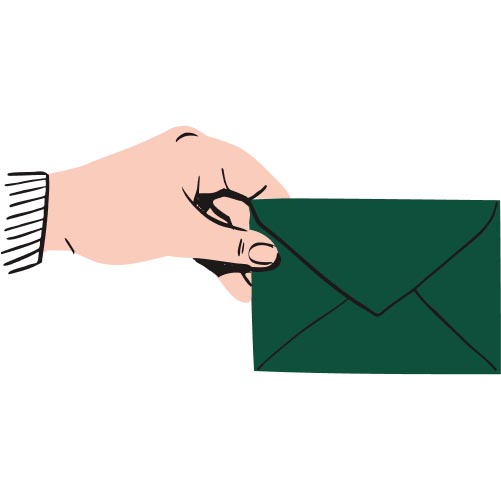Perhaps you’ve noticed a bit of upheaval in work life over the past few years? Remote work, distributed work, the obnoxiously jargony “asynchronous collaboration,” whatever you call it—work’s very different than it was in 2019. With less in-person communication, and more written communication for many of us, it’s a good time to address something fundamental: writing.
I’m going to show you how to be a better writer at work. Why listen to me? I’ve been a marketing writer for a living for a couple decades, so I’ve had quite a bit of time to hone my craft. And with Dropbox as part of my daily life, I’ve learned a thing or two about flexible work arrangements. Put another way, I spend a lot of time writing—and figuring out how to get people to read what I write.
Okay, let’s take this step by step.
Skip the formalities

Sometime around the age of seven, I was taught a whole bunch of stuff about how sentences should be constructed. “Rules,” you might call them. And you probably did, too. You know what? You can toss them out the window. Hot take: No one talks the way we were taught to write. And no one wants to read something written that way.
So what kinds of rules am I talking about? Please read the following in your best stentorian voice: “Never start a sentence with a conjunction!” “Do not use contractions!” “All sentences must have a subject and a verb!” “Ending a sentence with a preposition will lead to famine!”
I don’t know about you, but I don’t talk like that. And you might have noticed that I sure don’t write like that. Yet somehow, I’m still getting my point across. Hmm…
Express yourself, but maybe a skosh less?

Wanna know a secret? Come in close. A little closer. I won’t bite. PEOPLE DON’T LIKE TO READ.
Blame it on the internet or video games or overloaded inboxes, but people just don’t have the attention spans they used to. You might remember when they did, but sorry, people don’t read like they used to.
“But I have so much to say!” you might be thinking. Sure, we all do, but over-communicating will only hurt your message.
Faced with a wall of text in an email, people will probably skim it and move on. That’s the best-case scenario. Worst case? Straight to the trash. Or maybe you’ll get lucky, and they’ll archive the message and proceed to never open it again. It’s no wonder why: As recently as 2019, the average person received 96 business emails a day [PDF]. If overall email trends [PDF] are any indication, that number has surely grown since.
Follow the rules

Over the (many) years, I’ve come up with some loose rules for writing:
- Use short bulleted lists whenever possible—see what I just did?
- Limit sentences to 25 words—the shorter, the better.
- Keep paragraphs under 100 words. Again, the shorter… you get the point.
- 150 words per email, max. That’s all you get.
- Write like you talk. People like feeling your personality when they read.
- Use punctuation—an em-dash here or a comma there can give your writing a nice rhythm.
- Please, for the love of all that is sacred, stop with the business jargon.
Get over yourself

What I’ve learned is that my craft isn’t so much a magical talent gifted to me as it is awareness. Of what? The reader. In other words, start with your audience, and work backwards from there.
Unless you’re journaling, you’re writing for someone else. And that person has different needs and desires, different ways of processing information, and a lot less time to read your precious words.
How do you feel when you get a 10-paragraph long email at work? Be honest, you’re not excited to pore through that diatribe. Not to beat a dead horse, but you’ve got to stop writing so much.
Bring it all back home

So you’ve ingested the wisdom I’ve brought you from the mountaintop, and you’ve put, uh, fingers to keyboard. You’re not done yet!
Don’t hit Send or Share or Print just yet. Go back, and read what you’ve just written.
I know you don’t want to spend any more time on it than you have to, but you have to. Check for typos and grammatical mistakes, because those just make you look, uh, less smart than you are.
Read it? Fixed it? Good. Now read it out loud. Seriously. Find a quiet place where you can talk to yourself without feeling self-conscious, and read what you’ve just written. Err on the side of reading slowly—slower than you might talk to friends, family, or pets—and pay attention to how it sounds. If you want to focus while you’re reading and listen back afterwards, Dropbox Capture can record video of you reading while presenting your screen.
Does your work make sense? Can you read it out loud without tripping over your words? Is it something you’d want to have read to you at bedtime while you sip chamomile? And can you get through each sentence without gasping for breath? That last one is a pretty good indicator of whether or not you’re saying too much.
One more thing

So there you have it. The way you write matters, no matter where you write. Places like, y’know, Dropbox Paper. So do it with thought, care, and style.
Alright, off with ye. Go write. Less. Your readers will thank you for it.




